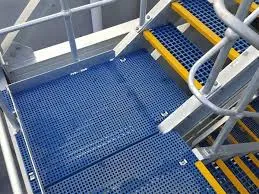
-
 Afrikaans
Afrikaans -
 Albanian
Albanian -
 Amharic
Amharic -
 Arabic
Arabic -
 Armenian
Armenian -
 Azerbaijani
Azerbaijani -
 Basque
Basque -
 Belarusian
Belarusian -
 Bengali
Bengali -
 Bosnian
Bosnian -
 Bulgarian
Bulgarian -
 Catalan
Catalan -
 Cebuano
Cebuano -
 China
China -
 China (Taiwan)
China (Taiwan) -
 Corsican
Corsican -
 Croatian
Croatian -
 Czech
Czech -
 Danish
Danish -
 Dutch
Dutch -
 English
English -
 Esperanto
Esperanto -
 Estonian
Estonian -
 Finnish
Finnish -
 French
French -
 Frisian
Frisian -
 Galician
Galician -
 Georgian
Georgian -
 German
German -
 Greek
Greek -
 Gujarati
Gujarati -
 Haitian Creole
Haitian Creole -
 hausa
hausa -
 hawaiian
hawaiian -
 Hebrew
Hebrew -
 Hindi
Hindi -
 Miao
Miao -
 Hungarian
Hungarian -
 Icelandic
Icelandic -
 igbo
igbo -
 Indonesian
Indonesian -
 irish
irish -
 Italian
Italian -
 Japanese
Japanese -
 Javanese
Javanese -
 Kannada
Kannada -
 kazakh
kazakh -
 Khmer
Khmer -
 Rwandese
Rwandese -
 Korean
Korean -
 Kurdish
Kurdish -
 Kyrgyz
Kyrgyz -
 Lao
Lao -
 Latin
Latin -
 Latvian
Latvian -
 Lithuanian
Lithuanian -
 Luxembourgish
Luxembourgish -
 Macedonian
Macedonian -
 Malgashi
Malgashi -
 Malay
Malay -
 Malayalam
Malayalam -
 Maltese
Maltese -
 Maori
Maori -
 Marathi
Marathi -
 Mongolian
Mongolian -
 Myanmar
Myanmar -
 Nepali
Nepali -
 Norwegian
Norwegian -
 Norwegian
Norwegian -
 Occitan
Occitan -
 Pashto
Pashto -
 Persian
Persian -
 Polish
Polish -
 Portuguese
Portuguese -
 Punjabi
Punjabi -
 Romanian
Romanian -
 Russian
Russian -
 Samoan
Samoan -
 Scottish Gaelic
Scottish Gaelic -
 Serbian
Serbian -
 Sesotho
Sesotho -
 Shona
Shona -
 Sindhi
Sindhi -
 Sinhala
Sinhala -
 Slovak
Slovak -
 Slovenian
Slovenian -
 Somali
Somali -
 Spanish
Spanish -
 Sundanese
Sundanese -
 Swahili
Swahili -
 Swedish
Swedish -
 Tagalog
Tagalog -
 Tajik
Tajik -
 Tamil
Tamil -
 Tatar
Tatar -
 Telugu
Telugu -
 Thai
Thai -
 Turkish
Turkish -
 Turkmen
Turkmen -
 Ukrainian
Ukrainian -
 Urdu
Urdu -
 Uighur
Uighur -
 Uzbek
Uzbek -
 Vietnamese
Vietnamese -
 Welsh
Welsh -
 Bantu
Bantu -
 Yiddish
Yiddish -
 Yoruba
Yoruba -
 Zulu
Zulu
frp launder
The Importance of FRP Launder in Modern Water Treatment
In the realm of modern water treatment, innovative materials and designs are essential for enhancing efficiency and operational sustainability. One such innovation is the FRP (Fiberglass Reinforced Plastic) launder, which plays a pivotal role in various industries, particularly in wastewater treatment and water purification processes. The unique attributes of FRP make it a preferred choice for engineers and water treatment facilities around the globe.
FRP is a composite material known for its strength, durability, and resistance to corrosion and chemicals. These properties are especially valuable in environments where traditional materials like steel or concrete would quickly degrade due to exposure to harsh conditions. By integrating FRP into the design of launder systems, facilities can improve their longevity and reduce maintenance costs, which is a primary concern in wastewater management.
The Importance of FRP Launder in Modern Water Treatment
Additionally, FRP launders have excellent hydraulic performance characteristics. Their smooth, non-porous surfaces minimize friction losses, thereby enhancing the flow of water through the system. This efficiency is crucial in optimizing the overall performance of treatment processes, allowing for better sedimentation and separation of solids from liquids. In industries where water quality is paramount, such as food processing, pharmaceuticals, and municipal water supply, the hydraulic advantages of FRP launders contribute directly to improved outcomes in water purity and resource sustainability.
frp launder

Moreover, the design versatility of FRP allows for bespoke solutions tailored to specific operational needs. FRP launders can be customized to fit various shapes and sizes, accommodating different flow rates and treatment configurations. This adaptability makes them suitable for a wide range of applications, from small-scale treatment systems to large municipal plants. Engineers can leverage advanced modeling and design techniques to create launders that precisely meet the demands of their particular installations, further enhancing efficiency and effectiveness.
In terms of environmental impact, the use of FRP launders aligns with the growing emphasis on sustainable practices in the water treatment industry. By improving the efficiency of water treatment processes, FRP launders help reduce energy consumption, lower chemical usage, and lessen the overall carbon footprint associated with wastewater management. Additionally, the long lifespan of FRP materials means fewer resources are used in replacement and repair, contributing to a more sustainable operational model.
As regulatory frameworks around water quality continue to tighten, the role of effective treatment solutions becomes increasingly critical. FRP launders offer a modern approach to these challenges, providing facilities with the tools necessary to meet stringent regulations while maintaining operational efficiency. Their resilience to corrosive chemicals and ability to handle varying temperatures further solidifies their position as a reliable solution for contemporary water treatment needs.
In conclusion, FRP launders represent a significant advancement in the design and operation of water treatment systems. Their unique combination of lightweight, durable materials, hydraulic efficiency, design flexibility, and sustainability makes them an indispensable asset to modern wastewater and water purification processes. As the industry evolves and the demand for clean water intensifies, innovations like FRP launders will be at the forefront of creating effective, environmentally responsible solutions for the future.









